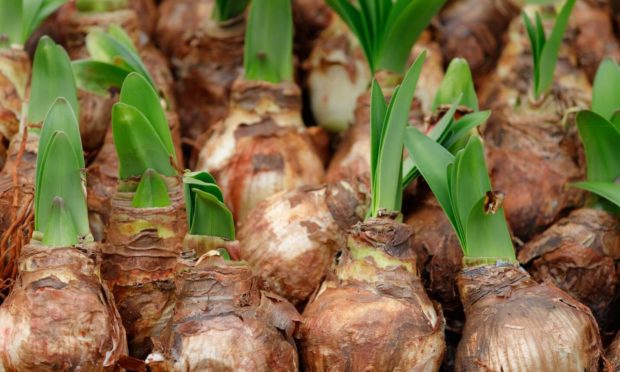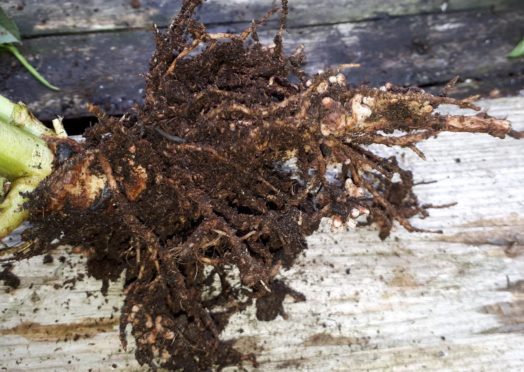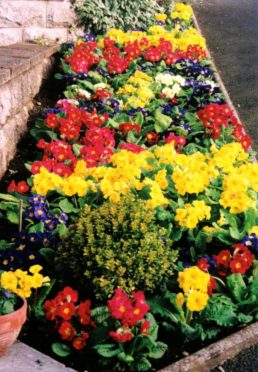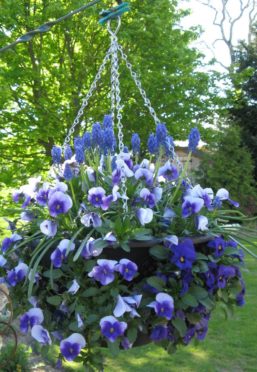Some of our new gardeners, having grown a successful crop of broad beans for the first time, are now lifting the plants and hopefully chopping up the foliage before consigning it to the compost bin, remembering not to put too much of the same in at any one time.
Why? One of the successes of good compost making is just like getting the ingredients in balance when baking a cake. Gosh, I’m only started and here am I diverging from my point already – what I set out to explain are the little nodules on the roots of the bean plants, only apparent when you pull the plants out of the ground.
They are NOT harmful, indeed they are the very opposite. These little growths are created by organisms called rhizobia which enter the root hairs, absorbing nitrogen from the atmosphere and turning it into ammonia. For that reason, the rhizobia are described as nitrogen-fixing bacteria.
Nitrogen is an essential plant food, but they can’t absorb the chemical itself. Peas and beans are members of the legume family which all have the capacity to “fix” nitrogen so creating ammonia, a form that can be absorbed and utilised by plants. It is a basic plant food. This fact also explains why we grow vegetables in a rotational system – legumes enrich the soil they grow in, so enhancing the conditions for the next crop to occupy that space.
Planting for spring
Meanwhile, the seasonal work goes on. I am emptying pots, tubs, baskets and flower beds making ready to plant up with spring flowering subjects. As I mentioned last week, annuals can be consigned to the compost heap, perennials can be pruned back and potted up as stock plants from which we can propagate young plant for next year. One element which I missed however, was the idea that some plants may have produced seeds which can be stored, to be sown next spring.
Lay out the seeds on a piece of paper to dry off superficial moisture before popping in an envelope, suitably labelled, then store in a drawer in a cool part of the house. It is not something which I do myself, preferring to start afresh with new seed. That said, I know that some of you enjoy the challenge. Remember though, types which are labelled F1 will not come true to this year’s colour.
Compost old or new?
Time now to consider the way ahead in preparation for the new plantings. Firstly, let me concentrate on tubs and troughs. Do we throw out all the compost and start afresh? Answer – there is no need.
I seldom use hanging basket displays for spring, but all the old compost from summer baskets is used to top dress garden borders, with the baskets themselves cleaned and stored till next spring. When it comes to the tubs and troughs however, I remove about half of the compost to spread around the borders and top up with fresh new peat-free material – mixing it thoroughly with the existing compost.
For flower borders, I suggest that a liberal dressing of well-rotted compost should be dug in to make ready for planting the wallflowers, etc, and there’s a good reason for this. Apart from physically loosening up the topsoil, the addition of well-rotted bulky organic matter will raise the level, thus improving the drainage capacity, especially important through the winter months.
What about a fertiliser dressing, pre-planting? Answer – a very light dressing on lighter soils only to encourage rooting.













